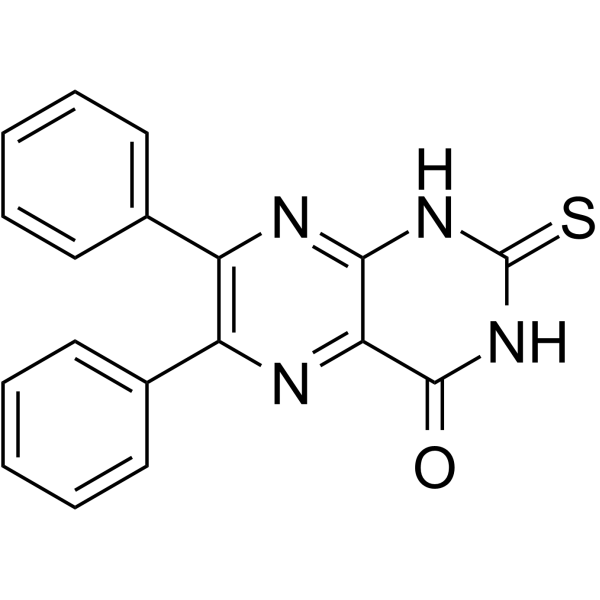| Cas No.: | 14892-97-8 |
| Chemical Name: | SCR7 pyrazine |
| Synonyms: | SCR7; SCR-7; SCR 7. |
| SMILES: | O=C1NC(NC2=NC(C3=CC=CC=C3)=C(C4=CC=CC=C4)N=C12)=S |
| Formula: | C18H12N4Os |
| M.Wt: | 332.38 |
| Sotrage: | 2 years -20°C Powder, 2 weeks 4°C in DMSO, 6 months -80°C in DMSO |
| Description: | SCR7 pyrazine is a DNA ligase IV inhibitor that blocks nonhomologous end-joining (NHEJ) in a ligase IV-dependent manner. SCR7 pyrazine is also a CRISPR/Cas9 enhancer which increases the efficiency of Cas9-mediated homology-directed repair (HDR). SCR7 pyrazine induces cell apoptosis and has anticancer activity[1][2]. |
| In Vivo: | SCR7 pyrazine (10 mg/kg; intraperitoneal injection; six doses; BALB/c mice) treatment significantly reduces breast adenocarcinoma-induced tumor and increases lifespan[1]. Animal Model: BALB/c mice injected with breast adenocarcinoma cells[1] Dosage: 10 mg/kg Administration: Intraperitoneal injection; on alternate days (0, 2, 4, 6, 8, and 10) Result: Significantly reduced breast adenocarcinoma-induced tumor and increased lifespan. |
| In Vitro: | SCR7 pyrazine (20-100 μM; 24 hours; MCF7 cells) treatment interferes with NHEJ in cells, leading to accumulation of unrepaired double-strand breaks (DSBs)[1]. SCR7 pyrazine treatment shows a dose-dependent decrease in cell proliferation with IC50 values of 40 μM, 34 μM, 44 μM, 8.5 μM, 120 μM, 10 μM and 50 μM for MCF7, A549, HeLa, T47D, A2780, HT1080 and Nalm6 cells, respectively[1]. In MCF7 cells, SCR7 pyrazine (20, 40 μM) treatment increases phosphorylation of ATM and activates p53, decreases MDM2, BCL2, resulting in activation of proapoptotic proteins, PUMA and BAX. And the shorter fragments of MCL1, PARP1, Caspase 3, and Caspase 9 cleavage are upregulated in a dose-dependent manner[1]. Western Blot Analysis[1] Cell Line: MCF7 cells Concentration: 20 μM, 40 μM, 100 μM Incubation Time: 24 hours Result: Showed an increase in levels of gH2AX foci and protein. |

 DC Chemicals' products qualify for U.S. tariff exemptions. We guarantee no price increases due to customs duties and maintain stable supply, continuing to deliver reliable research solutions to our American clients.
DC Chemicals' products qualify for U.S. tariff exemptions. We guarantee no price increases due to customs duties and maintain stable supply, continuing to deliver reliable research solutions to our American clients.





















